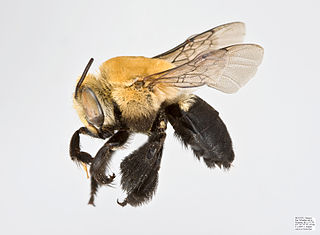
Celosia is a small genus of edible and ornamental plants in the amaranth family, Amaranthaceae. Its species are commonly known as woolflowers, or, if the flower heads are crested by fasciation, cockscombs. The plants are well known in East Africa's highlands and are used under their Swahili name, mfungu.

Celosia argentea, commonly known as the plumed cockscomb or silver cock's comb, is a herbaceous plant of tropical origin in the family Amaranthaceae from India and Nepal. The plant is known for its very bright colors. In India and China it is known as a troublesome weed.

Talinum fruticosum is a herbaceous perennial plant that is native to Mexico, the Caribbean, West Africa, Central America, and much of South America. Common names include Ceylon spinach, waterleaf, cariru, Gbure, Surinam purslane, Philippine spinach, Florida spinach, potherb fameflower, Lagos bologi, sweetheart, and Kutu bataw in Ghana from the Akan language It is widely grown in tropical regions as a leaf vegetable.

Celosia trigyna is a plant species commonly known as woolflower for its curious flowers.

Akuammine (vincamajoridine) is an indole alkaloid. It is the most abundant alkaloid found in the seeds from the tree Picralima nitida, commonly known as akuamma, comprising 0.56% of the dried powder. It has also been isolated from Vinca major. Akuammine is structurally related to yohimbine, mitragynine and more distantly Voacangine, all of which are alkaloid plant products with pharmacological properties.
Cockscomb is a fleshy growth or crest on the top of the head of a male fowl.
Texana denotes both the history and culture of Texas. It may also refer to:

Chiococca is a genus of flowering plants in the family Rubiaceae. It currently holds 23 species that are native to Florida, Texas, Mexico, Central America, much of South America, the West Indies, and the islands of Galápagos and Fernando de Noronha.

Pholisora catullus, the common sootywing or roadside rambler, is a butterfly of the family Hesperiidae. It is found from the central parts of the United States, south to central Mexico. Strays may colonize up to southern British Columbia, northern Michigan, southern Quebec and southern Maine. It is not found on peninsular Florida.

Helderberg Nature Reserve is a 398-hectare (980-acre) nature reserve in Somerset West, South Africa.

Celosia argentea var. cristata, known as cockscomb, is the cristate or crested variety of the species Celosia argentea. It was likely originally native to India, where it was saved from extinction in cultivation by the religious significance attached to the variety by Indian, Burmese, and Chinese gardeners who planted it near temples. The name cockscomb is used because the flower looks like the head on a rooster (cock). The plants are resistant to most diseases, and grow equally well indoors or out, though the perfect place is one with no shade and a well-drained soil, as the plant is susceptible to fungal diseases.

Akuammicine is a monoterpene indole alkaloid of the Vinca sub-group. It is found in the Apocynaceae family of plants including Picralima nitida, Vinca minor and the Aspidosperma.
Angadenia is a genus of plants in the family Apocynaceae first described as a genus in 1878. It is native to Florida and the West Indies.
- Angadenia berteroi(A.DC.) Miers - Florida, Bahamas, Cuba, Hispaniola, Turks & Caicos Islands
- Angadenia lindeniana(Müll.Arg.) Miers - Cuba, Hispaniola, Jamaica

Cola nitida is a species of plant belonging to the family Malvaceae.

Efo riro is a vegetable soup and a native soup of the Yoruba people of South West Nigeria and other parts of Yorubaland. The two vegetables most commonly used to prepare the soup are Celosia argentea and Amaranthus hybridus. The history of Efo riro is deeply rooted in the Yoruba culture. It was traditionally prepared with the locally grown vegetables, meat, fish, and a mixture of spices. The choice of vegetables and proteins varies based on personal preference and regional availability. The most commonly used vegetables are spinach, pumpkin leaves, or sorrel leaves, often combined with bell peppers, chili peppers, and onions.

Alegría is a Mexican candy made from seeds of amaranth and honey or sugar that is produced mainly in the town of Santiago Tulyehualco in the Xochimilco borough of Mexico City. It has been known as alegría, Spanish for "joy," since the 16th century. The alegría of Tulyehualco was officially declared Patrimonio Cultural Intangible de la Ciudad de México in September 2016.

The wych elm cultivar Ulmus glabra 'Nitida' [:'shining', an allusion to the smooth upper surface of the leaves], the smooth glossy-leaved wych, was described by Fries from specimens collected by P. C. Afzelius in 1841 on the island of Stora Karlsö, Sweden, as Ulmus montana nitida, in Novitiae Florae Suecicae: continuatio, sistens Mantissam III: 20 (1842). The Novitiae Florae Gotlandicae (1844) confirmed U. montana f. nitidaFr. as present on the islands of Stora Karlsö and neighbouring Lilla Karlsö off Gotland, Sweden, but did not report it from Gotland proper. A Stora Karlsö specimen from the Herbarium E. Fries is preserved in the Botanical Museum of Uppsala. The tree was listed by Rehder as U. glabraHuds. f. nitida (1915), a designation adopted by Krüssmann (1984), the latter copying Rehder's 'Norway' provenance error.

Centris nitida is a species of centridine bee in the family Apidae. It is found in Central America. It has also been introduced to the US state of Florida.
Celosia whitei, is a species of flowering plant in the amaranth family, Amaranthaceae. It was described in 1961 by William F. Grant, as Celosia whiteii. The plant was named in honor of Orland E. White.















